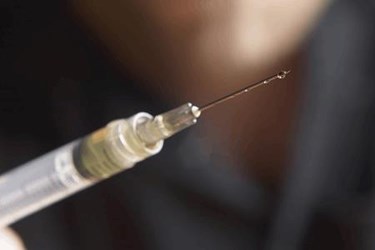Is Your Biologic At Risk For Protein Aggregation? Part 3
By Martin Gonzalez, Ph.D., senior group leader, R&D, Pfizer CentreOne

Third installment of a three-part series
Part 3: Drug formulation
The main culprit of a failing biologic drug is usually a flawed formulation. A robust formulation is the first line of defense for a protein to withstand the challenges of time and stress that the product will endure from manufacturing to the end of its shelf life. You can take every other precaution, such as gentle mixing, low lighting and pH control, but if your protein isn’t “happy," it will eventually aggregate and destabilize.
Selecting the right formulation is a complex task. Most formulations for biologics include a few commonly used components (namely, “excipients”) such as surfactants, sugars or salts; or substances that modify solution properties like pH, viscosity or tonicity. For example, an excipient like guanidinium hydrochloride or urea may be needed in a drug formulation to solubilize an insoluble protein. But those same chemicals are powerful triggers of protein aggregation. In many cases, the challenge of optimizing a formulation’s ingredients becomes finding just the right balance.
Following are some of the chief components of biologic formulations.
Surfactants
Depending on the intrinsic properties of your protein, it might be appropriate to introduce surfactant agents. Surfactants wrap proteins, which prevent them from direct contact with one another (interaction). That’s helpful if your proteins are not well folded, for example, and prone to aggregation. Surfactants can also aid in the solubility of your proteins’ subunits.
Small lipid-like structures, surfactants are both hydrophobic and hydrophilic. The hydrophobic head binds to the hydrophobic patches on the protein, which blocks the proteins from binding to one another (aggregating). Meanwhile, the hydrophilic head of the surfactant, exposed to the water in the solution, helps dissolve the protein’s structure. Surfactants can also prevent the protein’s adsorption to process surfaces (glass, stainless steel, tubing, bags) and to the container.
You must add just the right amount, however.
Too much, you risk denaturation. Excess surfactant can provoke aggregation by getting inside your protein and forcing it to unfold. Too much surfactant can also create too much foam during mixing. Proteins tend to migrate into the surplus foam, where they unfold and aggregate.
Too little, you lose protection. Adsorption of ingredients to tubing, filtration membranes or other surfaces during the manufacturing process is a risk for some ingredients. If you add too little surfactant and it is adsorbed, you may be left with only a fraction of what you require to protect your proteins.
Sugars
Adding sugars to your formulation provides a suitable environment for keeping your protein hydrated. Sugars can also help keep your protein properly folded, so that its tertiary and quaternary structures remain functional and in solution.
Salts
It might be necessary to have salts in your formulation to keep your protein functional and efficacious, or to provide your formulation tonicity, a safety requirement.
Salts can act as stabilizing or destabilizing agents; they provide proteins with the ability to establish electrostatic bonds that will keep the protein folded or unfolded. Some salts (or different amounts of the same salt) can push the protein into a more stable structure, known as “salting in.” Other salts do the opposite: Salts with large electrical charges (more charge density) can interact with the opposite charges in the surface of the protein, disrupting the network of hydrogen bonds that keep proteins cohesive. If the charge density is big enough, it can pull the protein apart – “salting out” – and generate self-aggregation/precipitation.
Viscosity-modifying agents
Highly concentrated protein solutions are becoming increasingly trendy, in part because they enable smaller doses with potentially more convenient drug delivery options. These dense, thick solutions, however, put stress on the structure of the proteins crowded together in the container. In such close contact, they are more prone to interact with each other and with excipients or container components, thus provoking aggregation. They are also more likely to suffer shear stress during manufacturing and storage. Taken together, these effects can impact product stability, safety and efficacy.
Viscosity-modifying agents, usually a particular type of amino acid or salt combination, protect your proteins by breaking the interactions between molecules, similar in action to surfactants.
Buffer
Most important is the buffer composition you select. It must provide a stable pH throughout shelf life of your drug, to ensure your medication remains within specification, including the prevention of protein hydrolysis or deamidation over time. The buffer can also play a role in preventing delamination of glass and formation of particulate matter within the container.
Headspace
The presence of headspace must be managed correctly to protect your drug over time. If your drug is oxygen-sensitive, headspace can cause your drug to oxidize if it is not filled under nitrogen atmosphere. Headspace can also enable shear stress related to violent liquid movement during shipping. Being careful to choose the correct container size will minimize headspace once your vial or syringe is filled.
In summary, there are multiple paths you can take to minimize the risk of protein aggregation in sterile injectables. By applying practical, tested methods, you can develop a safe and effective biologic medication for the patients who eagerly await its arrival.
________________________________________________________________________________________________
This is the last segment of a three-part series on protein aggregation. In part 1, we discussed causes of protein aggregation and the role of stress testing. In part 2, we examined how to prevent protein aggregation via considerations for the manufacturing process and container selection criteria.
Need More Information? Just Ask.
Click the button below to directly contact the supplier. Use it to:
- Ask a question.
- Request more detailed information or literature.
- Discuss your current project/application.
- Request a quote.
- Locate a distributor in your area.
- Schedule a demo.
